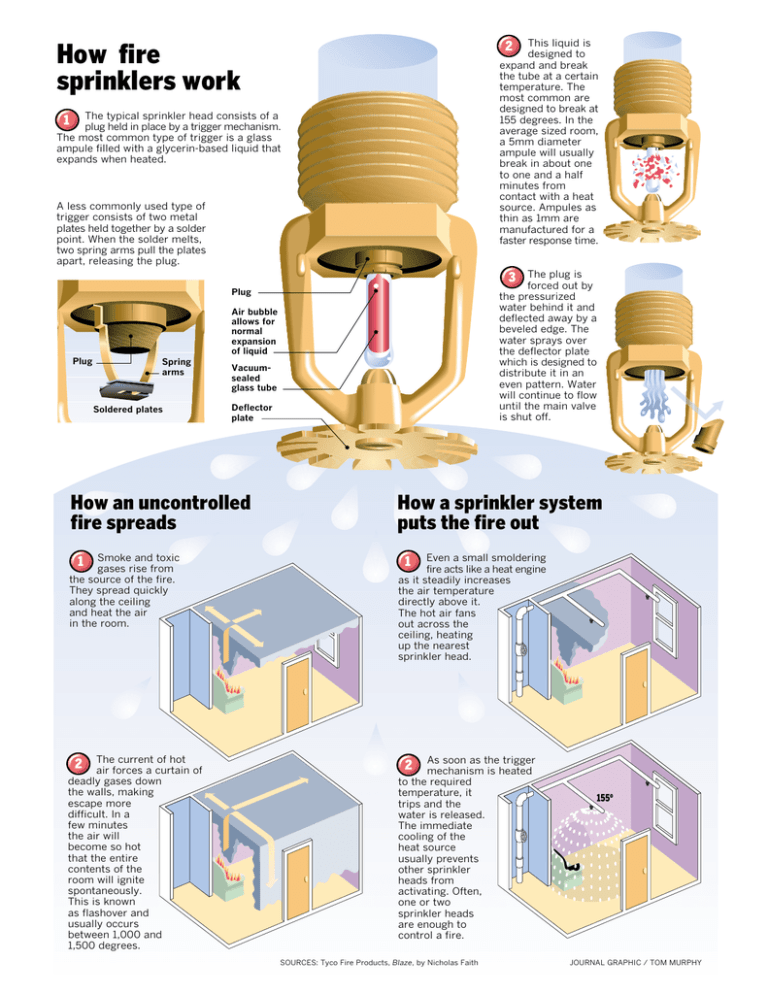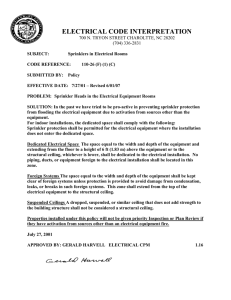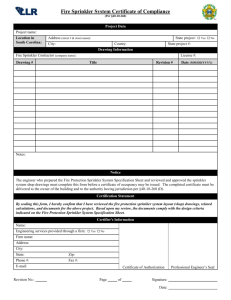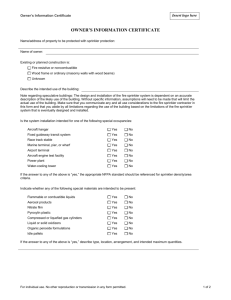How fire sprinklers work 2
advertisement

This liquid is designed to expand and break the tube at a certain temperature. The most common are designed to break at 155 degrees. In the average sized room, a 5mm diameter ampule will usually break in about one to one and a half minutes from contact with a heat source. Ampules as thin as 1mm are manufactured for a faster response time. 2 How fire sprinklers work The typical sprinkler head consists of a plug held in place by a trigger mechanism. The most common type of trigger is a glass ampule filled with a glycerin-based liquid that expands when heated. 1 A less commonly used type of trigger consists of two metal plates held together by a solder point. When the solder melts, two spring arms pull the plates apart, releasing the plug. The plug is forced out by the pressurized water behind it and deflected away by a beveled edge. The water sprays over the deflector plate which is designed to distribute it in an even pattern. Water will continue to flow until the main valve is shut off. 3 Plug Air bubble allows for normal expansion of liquid Plug Spring arms Soldered plates Vacuumsealed glass tube Deflector plate How an uncontrolled fire spreads How a sprinkler system puts the fire out Smoke and toxic gases rise from the source of the fire. They spread quickly along the ceiling and heat the air in the room. Even a small smoldering fire acts like a heat engine as it steadily increases the air temperature directly above it. The hot air fans out across the ceiling, heating up the nearest sprinkler head. The current of hot air forces a curtain of deadly gases down the walls, making escape more difficult. In a few minutes the air will become so hot that the entire contents of the room will ignite spontaneously. This is known as flashover and usually occurs between 1,000 and 1,500 degrees. As soon as the trigger mechanism is heated to the required temperature, it trips and the water is released. The immediate cooling of the heat source usually prevents other sprinkler heads from activating. Often, one or two sprinkler heads are enough to control a fire. 1 2 1 2 SOURCES: Tyco Fire Products, Blaze, by Nicholas Faith 155º JOURNAL GRAPHIC / TOM MURPHY



